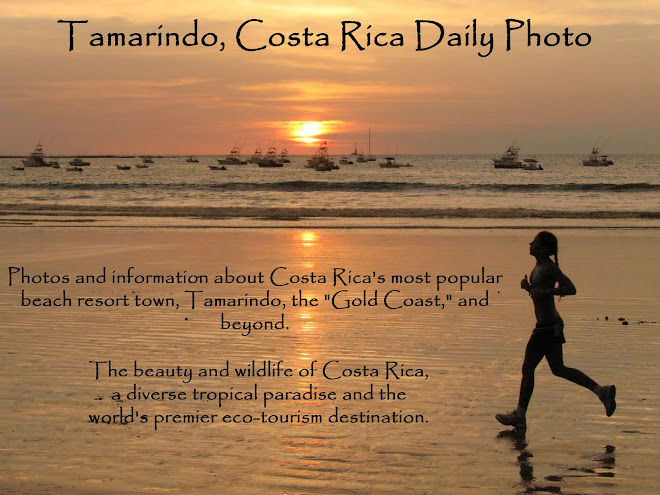+0447+P1000593.jpg) Tortuguero is best known as the most important nesting site for sea turtles in all of the Caribbean. We did not see any sea turtles, as they are typically viewed either in the ocean or at night while waiting on the beach for turtles to come ashore to lay eggs, or waiting for the eggs to hatch and the hatchlings to make it down the beach to the water.
Tortuguero is best known as the most important nesting site for sea turtles in all of the Caribbean. We did not see any sea turtles, as they are typically viewed either in the ocean or at night while waiting on the beach for turtles to come ashore to lay eggs, or waiting for the eggs to hatch and the hatchlings to make it down the beach to the water.Although I could not show a photo of a sea turtle, I am showing a photo of one of the freshwater turtles that we saw during our tour of the backwaters of the rivers and canals of Tortuguero Naitonal Park. This is a black river turtle, also called a black wood turtle. They are 32 cm. (12 in.) in length. They are locally called tortuga del rio negra, and their scientific name is rhinoclemmys funerea.
Costa Rica has sea turtles and fresh water tutles, but not any land turtles. The fresh water turtles such as this one change their diet during their lives. When young, they eat insects and fish. As they get older, they prefer plants. They will walk on land when foraging for food, and of course lay their eggs on land. The turtles are protected from predators by their shell, except from crocodiles, who will eat them whole.
Although Tortuguero is located on the far side of Costa Rica from Tamarindo, it shares with Tamarindo the status of being an important nesting site for sea turtles. Playa Grande, located next to Tamarindo, is the most important nesting site in the Pacific for leatherback turtles. Their nesting site is preserved as part of Las Baulas National Marine Park, and the government and conservationists try to prevent nearby landowners from developing their property because lights visible from the beach can interfere with baby turtle hatchlings finding the ocean because they may mistake the lights for the moon and lose their bearings.
The park rangers in both Tamarindo and Tortuguero lead groups of visitors on night walks and stake-outs on the beach to try to see turtles laying their eggs while keeping the visitors at a safe distance where they can see the turtles, but not interfere with them.

7 comments:
Ouch, just the thought of eating one of these whole. Interesting info and great shot.
thank you for an informative post. good turtle shot! :-)
..
.ero
He looks very curious.
What a cute little turtle,looks like he is trying to reach something. Not a pleasant thought to think of him being eaten in one bite by a croc.
There are dozens of nesting beaches in Costa Rica along both coasts where people can see nesting sea turtles. Check out www.seeturtles.org for more information.
Nice to know that sea turtle nesting sites are well preserve in Costa Rica. Great post! Nice photo..
Interesting post and a far less menacing creature of the caiman of the last post... Nice shot!
Post a Comment